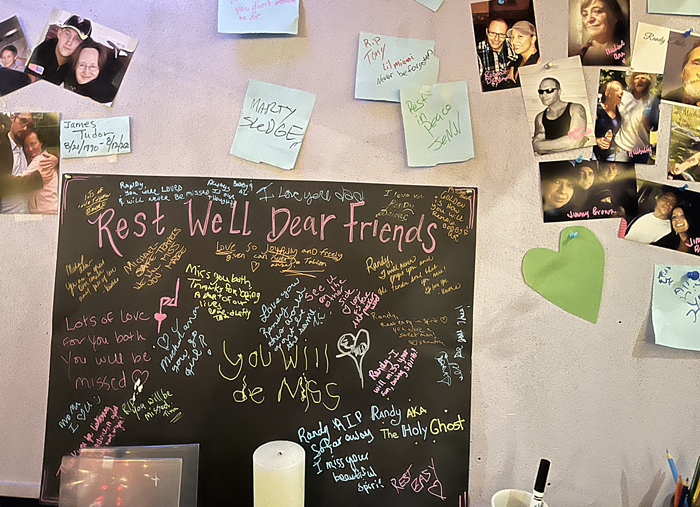
As hospitals across the state exceed capacity limits,Oregon medical workers are being forced to consider which COVID-19 patients to prioritize treating.
Only 6 percent of Oregon’s total ICU hospital beds and 7 percent of standard hospital beds are currently available for incoming patients, while hospitalizations continue to rise. The number of new weekly hospitalizations due to COVID symptoms more than doubled last week, rising from 224 to 546 people hospitalized. The number of ICU patients in Oregon hospitals reached 226 people Thursday morning—a new pandemic record.
“I want to be honest—the situation in Oregon's hospitals is growing increasingly dire,” Patrick Allen, Director of the Oregon Health Authority (OHA), said during a Thursday press conference. “Our healthcare system is on the verge of collapse in parts of the state. In the coming weeks, every Oregon hospital could be overtopped.”
Allen said that in hospitals across the state, patient beds are parked in hallways, outpatient rooms are being converted to ICU bedrooms, and over 200 patients are being held in emergency departments as they wait for critical care beds to become available. Jeff Absalon, the Chief Physician Executive at St. Charles Hospital in Bend, said nurses at his hospital are averaging ten patients each. Absalon shared a story of nurses who had to watch one of their patients die of COVID and continue working without time to process their grief.
“Our nurses had tears in their eyes, and yet they had to get right back to work to take care of the next patient that needed their services,” Absalon said during the press conference. “So here’s my ask: If you’re not vaccinated, get vaccinated. This is the way out of this pandemic.”
The surge of cases is caused by unvaccinated patients becoming severely sick with the Delta variant and needing to be hospitalized, according to Absalon. Because hospitals are filling with unvaccinated people—some of whom are staunchly against receiving the COVID vaccine—Absalon says ethical questions are being raised within the healthcare community over whether caring for vaccinated yet immunocompromised patients or other breakthrough cases of COVID in vaccinated people should be prioritized over unvaccinated patients.
OHA representatives say such prioritization is unethical.
“While that is a gut reaction to say that people made a choice not to be vaccinated and should fall lower on the list, we have a framework in place that we've worked on with our healthcare partners to prioritize care during these types of crises and emergencies that shows that we won't discriminate against people because of the choices they've made, intellectual or developmental disabilities, or other conditions,” State epidemiologist Dean Sidelinger said. Sidelinger said as healthcare resources continue to be taxed while hospitalizations increase, healthcare workers will not use a patient’s lack of vaccination as a reason to withhold or deprioritize care.
While some “anti-vaxxers” are people who actively tout disproved conspiracy theories about COVID, some of Oregon’s unvaccinated population are people of color who have been historically harmed and underinvested in by government-run public health systems. Public health departments across the state have made efforts to partner with organizations trusted by community members and lower communication barriers to getting the vaccine, yet Black, Hispanic, and Native American communities in Oregon still lag behind their white counterparts in vaccination rates. As of Thursday, 65 percent of white Oregonians are vaccinated as compared to 51 percent of Black Oregonians, 49 percent of Hispanic Oregonians, and 46 percent of Oregon’s Native American population.
At this time, hospitals still have enough resources to treat all of their COVID patients by putting off all elected surgeries and other non-essential medical treatments, but OHA projects that COVID cases will overrun hospitals by early to mid-September. According to modeling from the Oregon Health and Science University (OHSU) and OHA, if 80 percent of Oregonians follow the current indoor mask mandate, Oregon is poised to exceed hospital capacity by 250 beds in September. If no one follows the mask mandate, that number goes up to 500.
Absalon’s staff is starting to discuss the difficult choices they will need to make when that time comes.
“We really are in a dire situation, and those kinds of very difficult questions that are being raised are things that we may very well need to address, or define how we're going to approach in the future,” Absalon said, but did not include any specific guidelines hospital staff will follow.
The state has deployed 2,000 US National Guard members to assist hospital staff across the state, and expects to receive 24 EMT paramedics through the Federal Emergency Management Agency (FEMA). Southern Oregon, which is being hit hardest by the Delta variant, will be prioritized to receive help from those additional medical workers and guard members. A second wave of guard members may be sent to the Portland metro region.
Brown and the OHA are also creating “surge beds”—beds at long term care facilities that can take on more stable COVID patients to ease the strain on hospitals. Brown has removed some restrictions to allow hospitals to discharge patients swiftly, increasing the speed with which hospitals can turn over beds for new patients. In addition, OHA has asked the federal government to create a fully-staffed field hospital in Oregon to help with the hospital capacity crisis.
During the press conference Thursday, state health officials took a pleading tone while urging people to get vaccinated.
“The Delta variant is relentless in its search for new people to infect—don’t let it find you,” Allen of OHA said. “The consequences for you, your family, and our healthcare system could be catastrophic.”



















